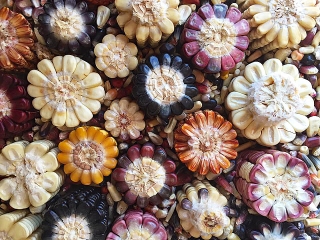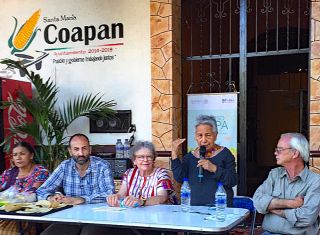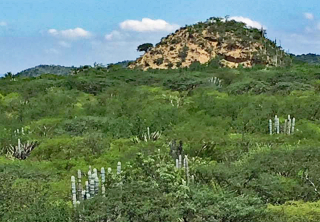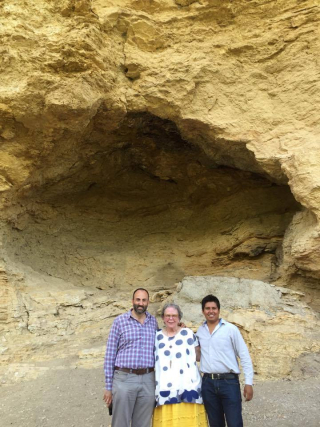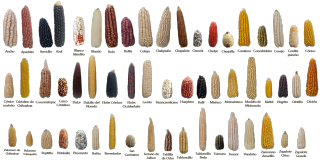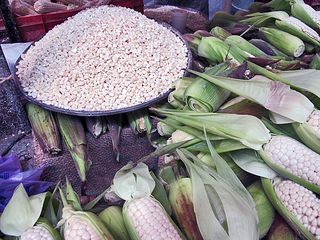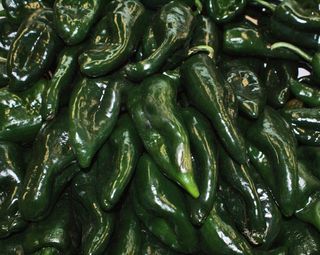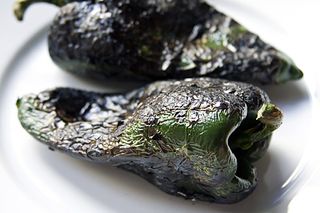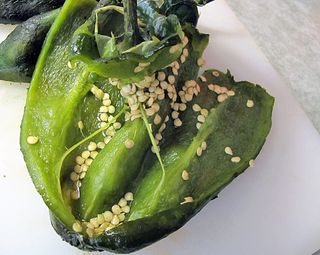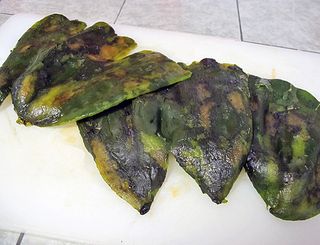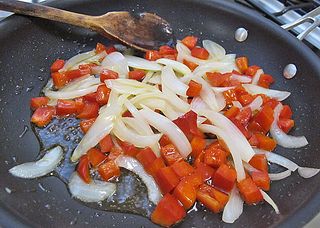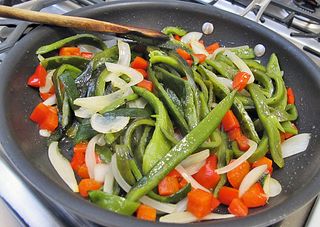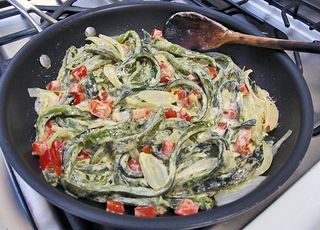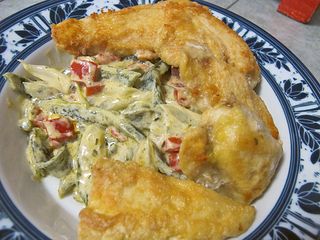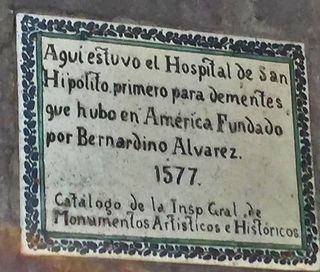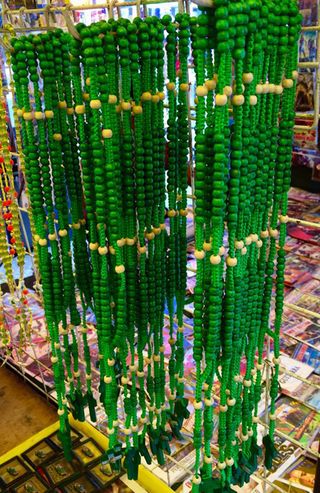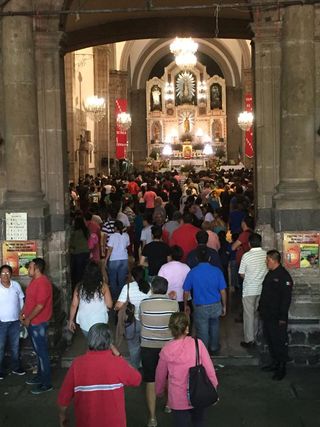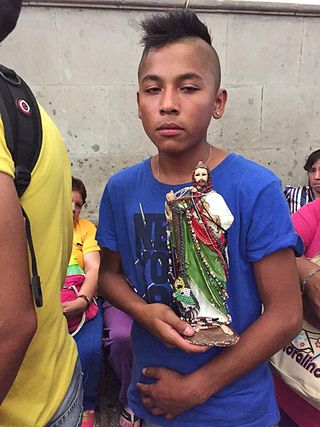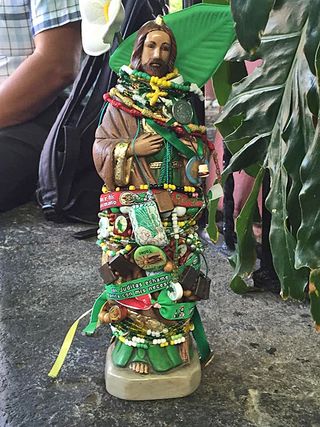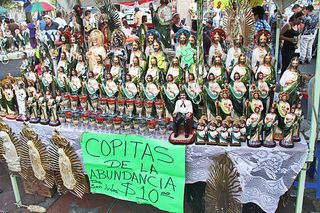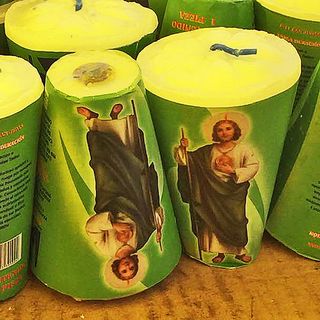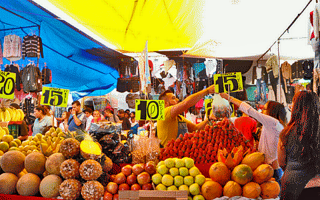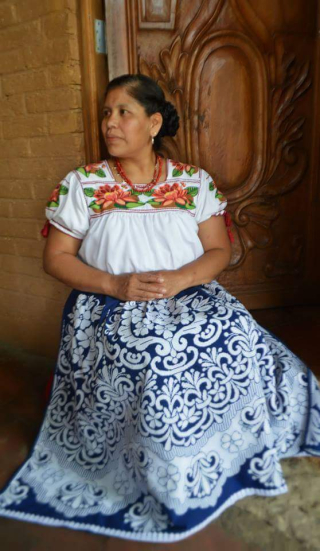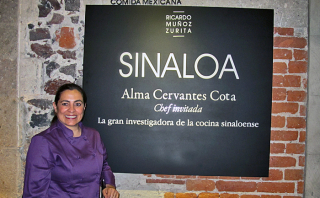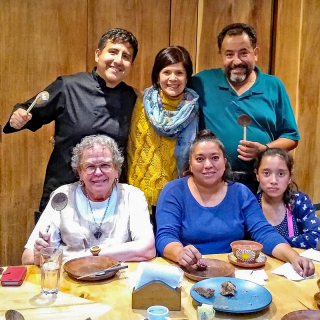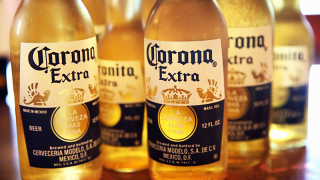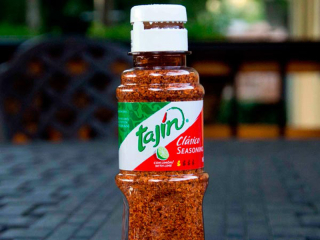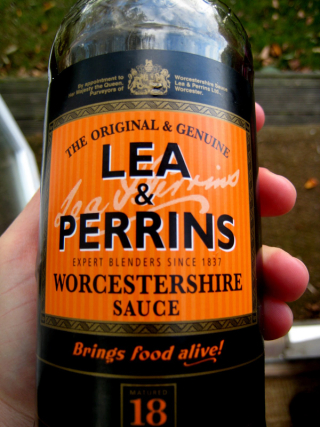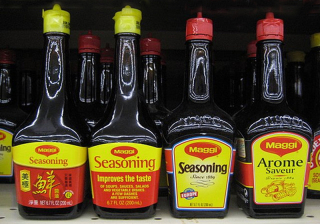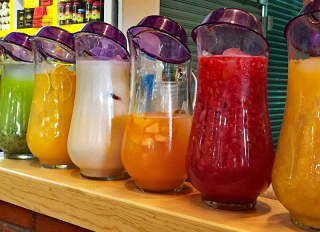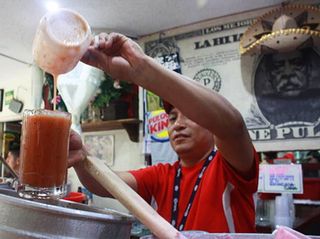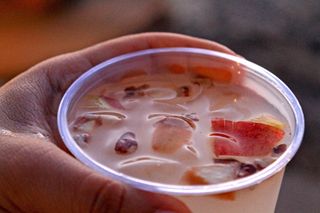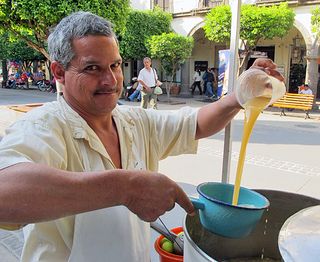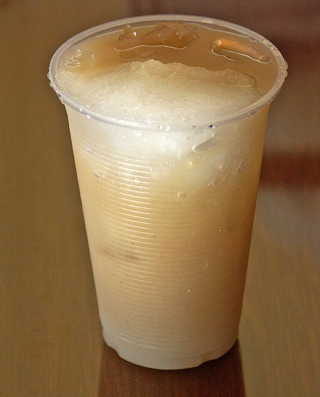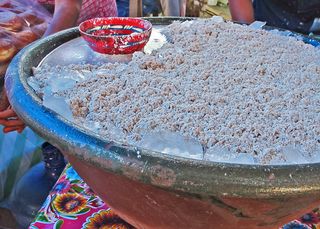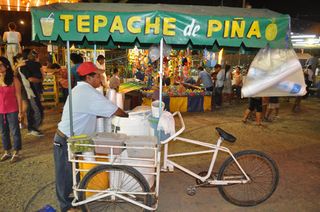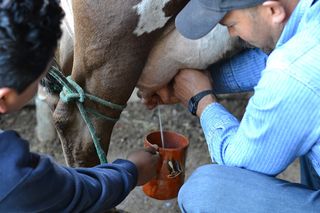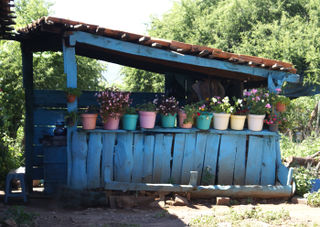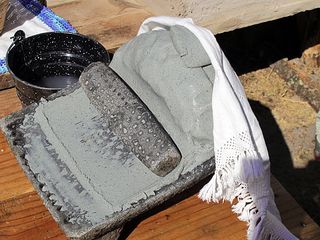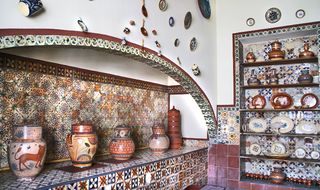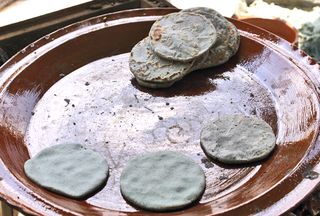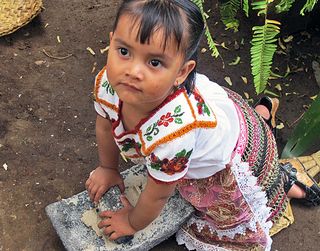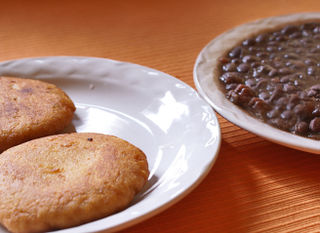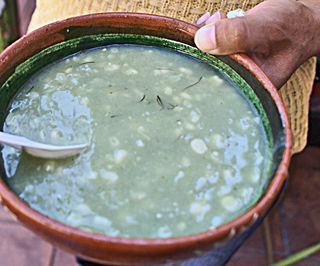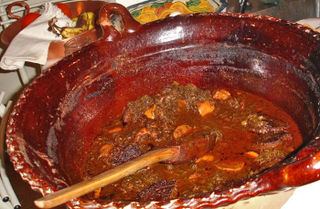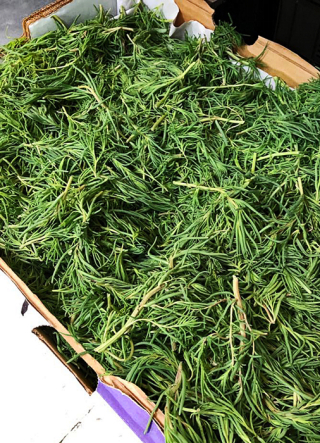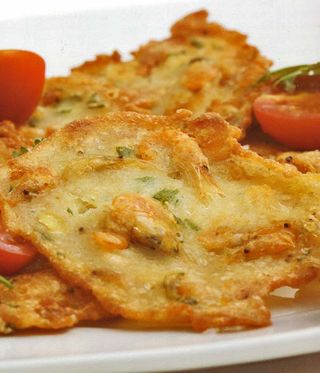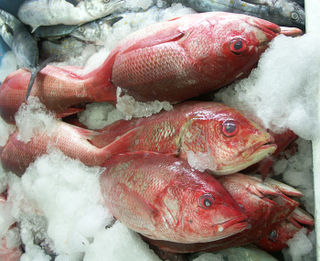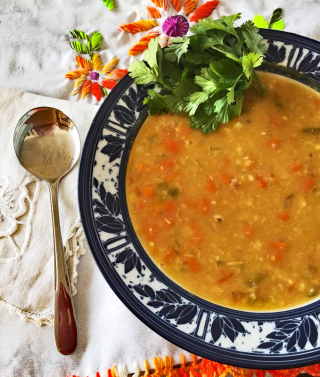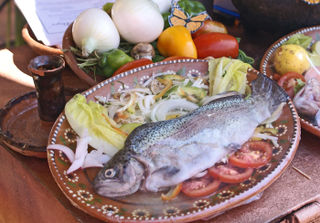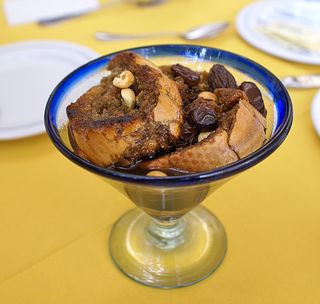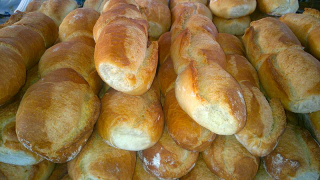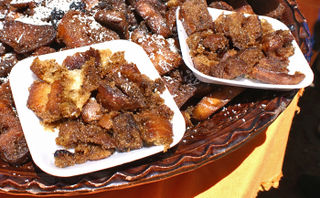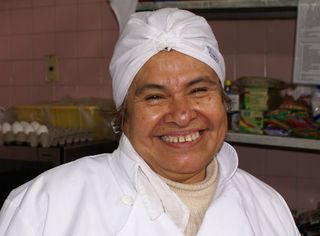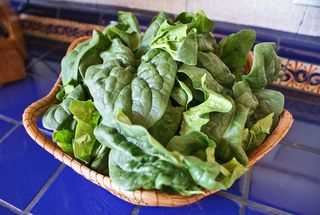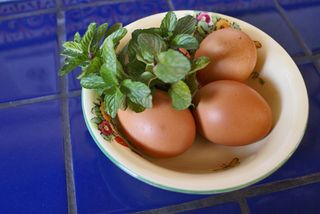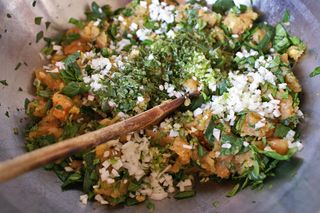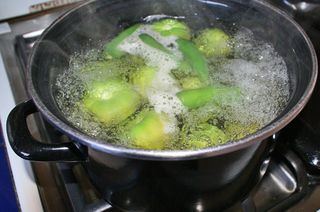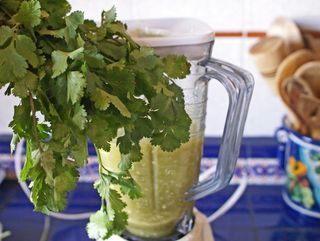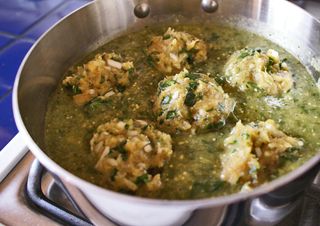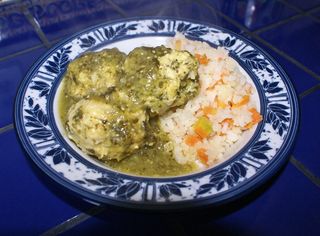I wrote and first published this article in 2010, in response to inquiries from readers who were confused about other authors' articles about "What is authentic Mexican food?" The subject has come up again and again, most recently in comments and queries from readers and food professionals about Mexican and other cuisines. I still stand behind what I wrote nearly 10 years ago.
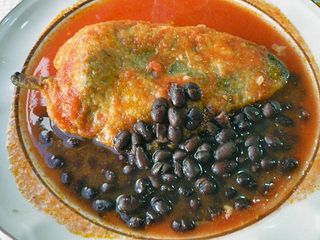
"Real" Mexican chile relleno (stuffed, battered, and fried chile poblano), caldillo de jitomate (thin tomato broth), and frijoles negros de la olla (freshly cooked black beans). Notice that the chile is not suffocated with globs of melted cheese: the cheese is inside the chile, as its filling.
More and more people who want to experience "real" Mexican food are asking about the availability of authentic Mexican meals outside Mexico. Bloggers and posters on food-oriented websites have vociferously definite opinions on what constitutes authenticity. Writers' claims range from the uninformed (the fajitas at such-and-such a restaurant are totally authentic, just like in Mexico) to the ridiculous (Mexican cooks in Mexico can't get good ingredients, so Mexican meals prepared in the United States are superior to those in Mexico).

Much of what I read about authentic Mexican cooking reminds me of that old story of the blind men and the elephant. "Oh," says the first blind man, running his hands up and down the elephant's leg, "an elephant is exactly like a tree." "Aha," says the second, stroking the elephant's trunk, "the elephant is precisely like a hose." And so forth. I contend that if you haven't experienced what most writers persist in calling "authentic Mexican", then there's no way to compare any restaurant in the United States with anything that is prepared or served in Mexico. You're simply spinning your wheels.
It's my considered opinion that there is no such thing as one definition of authentic Mexican. Wait, before you start hopping up and down to refute that, consider that in my opinion, "authentic" is generally what you were raised to appreciate. Your mother's pot roast is authentic, but so is my mother's. Your aunt's tuna salad is the real deal, but so is my aunt's, and they're not the least bit similar. And Señora Martínez in Mexico makes yet another version of tuna salad, very different from any I've eaten in the USA.

Carne de puerco en salsa verde (pork meat in green sauce), a traditional recipe as served at the restaurant Fonda Margarita in Mexico City.
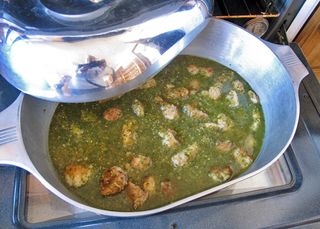
Carne de puerco en salsa verde from the Mexico Cooks! home kitchen. The preparation looks similar to that at Fonda Margarita, but I tweak a thing or two that make the recipe my personal tradition, different from the restaurant's.
As you can see, the descriptor I use for many dishes is 'traditional'. We can even argue about that adjective, but it serves to describe the traditional dish of–oh, say carne de puerco en chile verde–as served in the northern part of Mexico, in Mexico City, in the Central Highlands, or in the Yucatán. There may be big variations among the preparations of this dish, but each preparation is traditional and each is considered authentic in its region.
I think that in order to understand the cuisines of Mexico, we have to give up arguing about authenticity and concentrate on the reality of certain dishes.
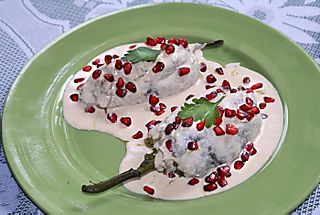
A nearly 200-year-old tradition in Mexico that shows up every September on Mexico's home and restaurant tables: chiles en nogada (stuffed chiles poblano in a creamy sauce made with fresh (i.e., recently harvested) walnuts. It's the Mexican flag on your plate: green chile poblano, creamy white walnut sauce, and red pomegranate arils. But hoo boy–there are arguments to the death about the "authentic" way to prepare these chiles: battered or not battered? Put up your dukes! (I fall on the not-battered side, in case you wondered. God help me.)
Traditional Mexican cooking is not a hit-or-miss let's-make-something-for-dinner proposition based on "let's see what we have in the despensa (pantry)." Traditional Mexican cooking is as complicated and precise as traditional French cooking, with just as many hidebound conventions as French cuisine imposes. You can't just throw some chiles and a glob of chocolate into a sauce and call it mole. You can't simply decide to call something "authentic" Mexican x, y, or z when it's not. There are specific recipes to follow, specific flavors and textures to expect, and specific results to attain. Yes, some liberties are taken, particularly in Mexico's new alta cocina mexicana (Mexican haute cuisine) and fusion restaurants, but even those liberties are based, we hope, on specific traditional recipes. As Alicia Gironella d'Angeli (a true grande dame of Mexico's kitchen) often said to me, "Cristina, you cannot de-construct a dish until you have learned to construct it." Amen.
In recent readings of food-oriented websites, I've noticed questions about what ingredients are available in Mexico. The posts have gone on to ask whether or not those ingredients are up to snuff when compared to what's available in what the writer believes to be more sophisticated food sources such as the United States.
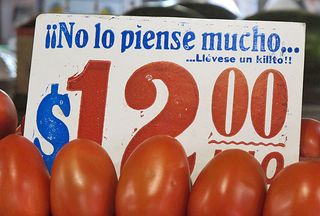
Deep red, vine-ripened plum tomatoes, available all year long in central Mexico. The sign reads, "Don't think about it much–take home a little kilo!" At twelve pesos the kilo, these Mexico-grown tomatoes, brought to market red-ripe, cost approximately 75 cents USD for 2.2 pounds.
Surprise, surprise: most readily available fresh foods in Mexico's markets are even better than similar ingredients you find outside Mexico. Foreign chefs who tour with me to visit Mexico's stunning produce, fish, and meat markets are inevitably astonished to see that what is grown for the ordinary home-cook end user in Mexico is fresher, riper, more flavorful, more attractive, and much less costly than similar ingredients available in the United States.
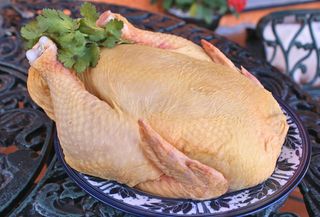
Chicken, ready for the pot. The chickens raised in Mexico for our food are generally fed ground marigold petals mixed into their feed–that's why the flesh is so pink, the skin so yellow, and why the egg yolks are like big orange suns.
It's the same with most meats: pork and chicken are head and shoulders above what you find in North of the Border supermarkets. Fish and seafood are direct-from-the-sea fresh and distributed by air within just an hour or two from any of Mexico's long coastlines.
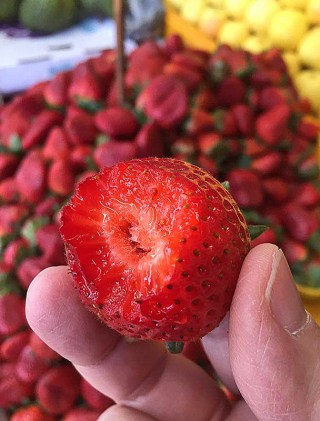
Look at the quality of Mexico's fresh, locally grown, seasonal strawberries–and the season starts right now, in February. Deep red to its center, a strawberry like this is hard to find in other countries.
Nevertheless, Mexican restaurants in the United States make do with the less-than-superior ingredients found outside Mexico. In fact, some downright delicious traditional Mexican meals can be had in some north of the border Mexican restaurants. Those restaurants are hard to find, though, because in the States, most of what has come to be known as Mexican cooking is actually Tex-Mex or Cal-Mex cooking. There's nothing wrong with Tex-Mex and Cal-Mex cooking, nothing at all. It's just not traditional Mexican cooking. Tex-Mex is great food from a particular region of the United States. Some of it is adapted from Mexican cooking and some is the invention of early Texas settlers. Some innovations are adapted from both of those points of origin. Fajitas, ubiquitous on Mexican restaurant menus all over the United States, are a typical Tex-Mex invention. Now available in some of Mexico's restaurants, fajitas are offered to the tourist trade as prototypically authentic.
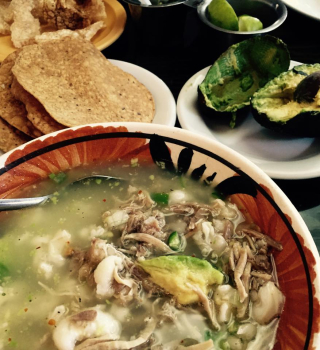
Pozole blanco (white pozole) with delicious clear broth that starts with a a long-simmered whole pig's head, nixtamalized native white cacahuatzintle corn, and lots of tender, flavorful pork meat. Add to the pot some herbs and spices. Then add hunks of avocado at the table–along with a squeeze or two of limón criollo (you know it as Key lime), some crushed, dried Mexican oregano, crushed, dried chile de árbol, a raw egg fresh from the shell (it cooks in the hot broth), and, if you like, a tablespoon or two of mezcal. Traditional and heavenly!
You need to know that the best of Mexico's cuisines is not found in restaurants. It comes straight from somebody's mama's kitchen. Clearly not all Mexicans are good cooks, just as not all Chinese are good cooks, not all Italians are good cooks, and so forth. But the most traditional, the most (if you will) authentic Mexican meals are home prepared.

Diana Kennedy, UNAM 2011. Mrs. Kennedy was at the Mexican National Autonomous University to present her book, Oaxaca Al Gusto.
That reality is what made Diana Kennedy who she is today: she took the time to travel Mexico, searching for the best of the best of the traditional preparations. For the most part, she didn't find them in fancy restaurants, homey comedores (small commercial dining rooms) or fondas (tiny working-class restaurants). She found them as she stood facing the stove in a home kitchen, watching doña Fulana prepare desayuno (breakfast), comida (the midday main meal of the day), or cena (supper) for her family. Ms. Kennedy, an English woman, took the time to educate her palate, understand the ingredients, taste what was offered to her, and learn, learn, learn from home cooks before she started putting traditional recipes, techniques, and stories on paper. If we take the time to prepare recipes from any of Ms. Kennedy's many cookbooks, we too can take advantage of her wealth of experience and can come to understand what traditional Mexican cooking can be. Her books will bring Mexico's kitchens to you when you are not able to go to Mexico. But please: do follow the recipes, or your dish will come out different from what it is supposed to be.
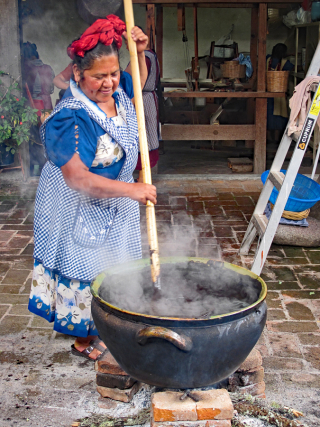
My dear friend Abigail Mendoza, cocinera tradicional (traditional home cook) from Teotitlán del Valle, Oaxaca, prepares a vat of mole negro (black mole, the king of moles) for a large party she invited me to attend at her home.
In order to understand the traditional cuisines of Mexico, we need to experience their riches. Until that time, we can argue till the cows come home and you'll still be just another blind guy patting the beast's side and exclaiming how the elephant is mighty like a wall.
Looking for a tailored-to-your-interests specialized tour in Mexico? Click here: Tours.
